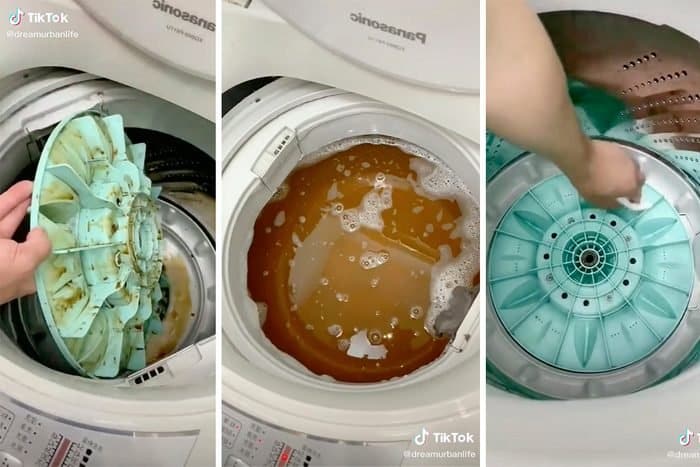There are lots of household items that we clean on a frequent basis. You can probably tell me the last time you cleaned your toilet or emptied your garbage. You can probably also tell me the last time you wiped down your kitchen counters or vacuumed your floors.
But you probably have never thought about the last time you cleaned your clothes washer. Here are some tips and tricks on how to clean a top loading washing machine!
GET RID OF THE FUNK
Contents
If you have a top loading washer, you may have noticed that your washing machine has developed a bit of a funky smell. This is due to the build up of soiled materials in your laundry, minerals in your hard-water, or even build up from your laundry detergent.
These smells are probably coming from areas that are hard for you to see or clean. All washing machines have those nooks and crannies that are hard to reach, but incredibly important to get to every now and then to prolong the life of your machine, and keep your clothes smelling and looking great.
HOW TO CLEAN A TOP LOADING WASHING MACHINE
The good news is, even though you may not have washed your washer in a while (we know, that’s funny), you more than likely have everything you need in your house to give it a good, deep clean right now!
You’ll need white cleaning vinegar, a soft microfiber cloth (or other lint-free cloth), a toothbrush (or similar soft-bristled brush that you can get into tight spaces), and some baking soda.
First, set your washer to the highest level, making sure it’s also set to the hottest water setting. Pour four cups of white cleaning vinegar into the drum. When the cycle begins, pause the washing machine and let the vinegar and water mixture sit for at least an hour.
Before starting the cycle up again, wipe down the top of the washer with your microfiber (or other comparable lint-free cloth). Use the hot water/vinegar mixture from the drum of your washer for this.
Scrub the fabric softener and bleach dispensers with your toothbrush (or other soft-bristled brush) using the hot water/vinegar solution again. Once an hour has passed, start the wash cycle again and let it run all the way through.
When the wash cycle has been completed, start another, this time adding one cup of baking soda to the wash drum. Let it run all the way through (again using the highest setting and the hottest water temperature for the cycle).
When the cycle is done, wipe the inside of the drum with your microfiber cloth to get rid of any seen or unseen scrum or mildew.
HOW TO PREVENT THE FUNK FROM RETURNING
Because washing machines are typically dark, damp environments, mold and mildew love to grow there. The biggest way to prevent as much of that mold and mildew as possible from setting up camp in your appliance is to keep the air flowing to the washer drum.
When you aren’t using the machine, be sure to keep the lid open. When possible, ensure that there is additional airflow to your laundry area. Open windows, put on a fan, or keep the door open when you can. This will help increase the fresh air flowing in and out of your machine and prevent regrowth of mold and mildew.
HOW OFTEN SHOULD I CLEAN MY TOP LOADING WASHER?
A good rule of thumb is to clean your washer every six months or so. I wash mine at the same time that I change the batteries on my smoke detectors: when I change my clocks. Daylight savings is a great reminder to do some of those tasks that we don’t need to do as often.
The other indicator that it’s time to clean your washing machine is the nose test. Stick your head over your washer every so often and take a little sniff. If you smell that funky, musty odor then you know it’s time to do a deep clean.
THE BENEFIT OF CLEANING YOUR WASHING MACHINE
The biggest benefit to cleaning your appliance on a consistent basis is that your machine will run better for longer. A clean machine is an efficient machine. The build up of soils, minerals, and detergent will wear your machine out and increase the likelihood that something will break down. Save yourself a repair cost and clean it!

